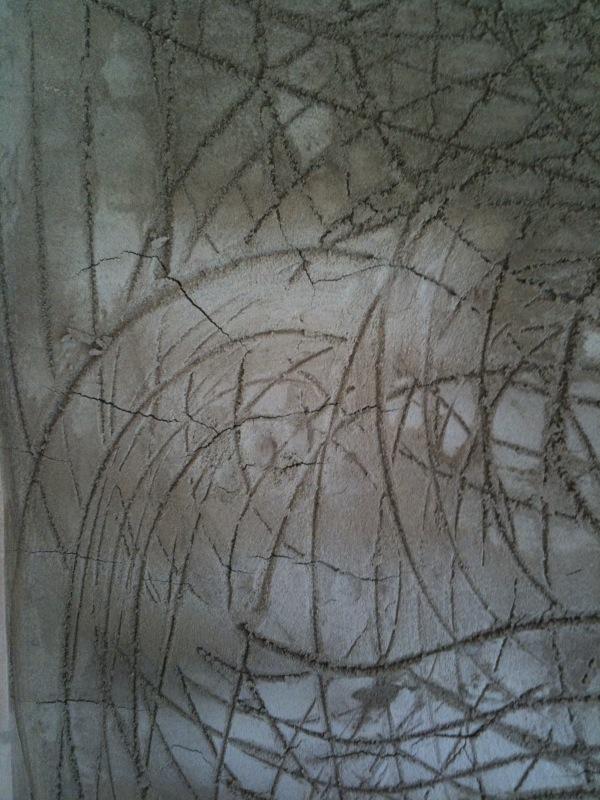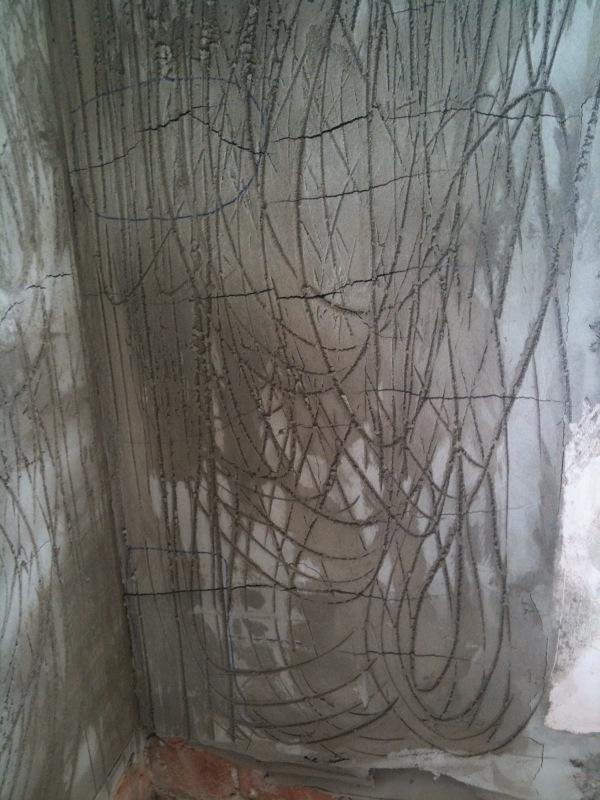- Joined
- 17 Feb 2006
- Messages
- 373
- Reaction score
- 1
- Country

I've had somebody render wall where the bath is going to be. I stripped off the old plaster/sand and cement myself back to bare brickwork, wirebrushed it.
He's left it with a scratched finish, presumably as a key for tile adhesive. I'll be doing the tiling.
But there are lots of cracks and a couple of spots where it sounds like it's blown. Should there be cracks in this? The whole point of having it sand and cement rendered (with waterproofer added) was to create a waterproof substrate for tiling. I told the plasterer to treat it as a 'tanking' job. It's obviously not waterproof if its full of cracks.
He's left it with a scratched finish, presumably as a key for tile adhesive. I'll be doing the tiling.
But there are lots of cracks and a couple of spots where it sounds like it's blown. Should there be cracks in this? The whole point of having it sand and cement rendered (with waterproofer added) was to create a waterproof substrate for tiling. I told the plasterer to treat it as a 'tanking' job. It's obviously not waterproof if its full of cracks.


